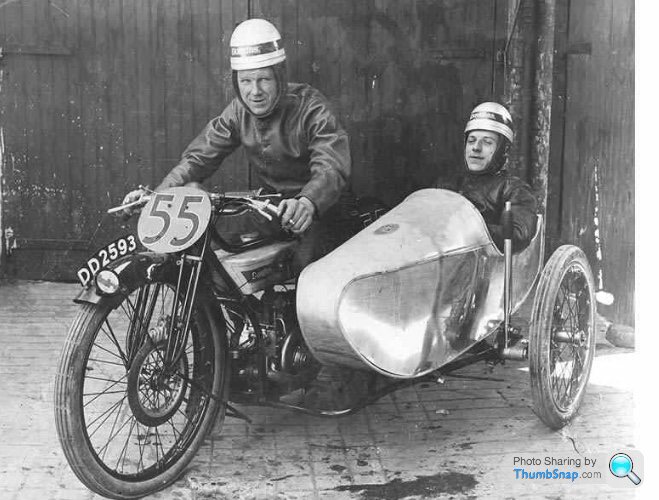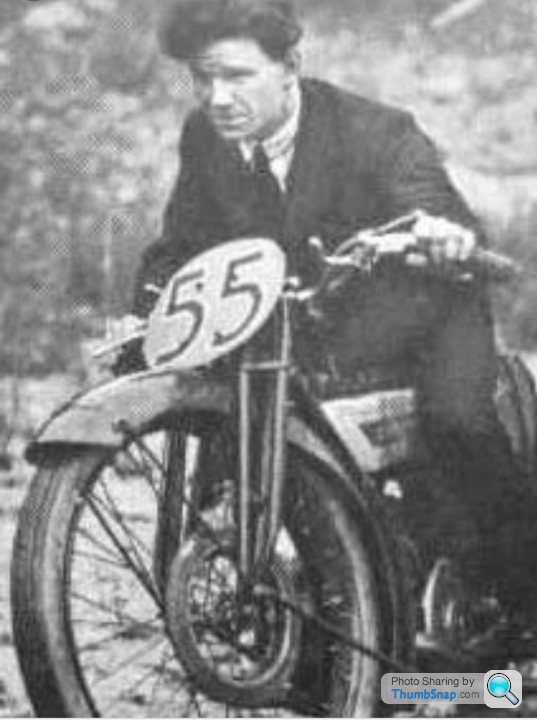PH Origins: Disc brakes
Jaguar's C-Type dragged disc brakes into the automotive limelight - but it wasn't the technology's first outing

In 1952, William Lyons entered a Jaguar C-Type into the Goodwood Easter race. There was no doubt that it would perform well; its light tubular chassis, aluminium body and powerful 3.4-litre engine made it a seriously competitive car.
The C-Type in question, chassis number XKC003, had also already proven its mettle - as the very same Jaguar, driven by Peter Walker and Peter Whitehead, had won the 1951 Le Mans. It had been the car's first outing and ably demonstrated what the 210hp, 144mph-capable racer could do.

At Goodwood, however, the car had even more of an advantage over its rivals - as behind its wire wheels were a set of Dunlop disc brakes. These, compared to the drum brakes used by other C-Types, offered several key advantages; they were lighter, smaller, capable of producing immense stopping power for their size and able to dissipate heat more easily.
This meant that, in theory, the friction material and discs could withstand and deliver more rapid stops than drum equivalent before they began to fade. They would also perform better in the wet, as the rotating disc would sling water away while the pad would sweep the surface clean. All in, they were ideal for the increasingly powerful race cars. They were also easier to service and far more consistent in their performance, endowing the drivers with further improved confidence.
The C-Type, driven by Stirling Moss, ultimately finished in fourth place at Goodwood but, in doing so, set the fastest lap of the day. Its disc brake set-up was not devoid of issues, though. For one thing, so much heat was being dumped into the calipers that the brake fluid would boil - which itself caused the brakes to fade; the bubbles of gas generated by the boiling fluid could be compressed, causing the effectiveness of the hydraulic system to ebb away. This, unsurprisingly, resulted in many a driver experiencing an alarming lack of braking power when approaching a corner.

Jaguar persisted with the technology and, by 1953, had resolved the issues. The C-Types promptly demonstrated a terrific and repeatable stopping power advantage at Le Mans, which aided the cars in securing both first and second place. Not long after, impressed by the C-Type's deceleration, other manufacturers began adopting disc brakes.
For example, in 1955, Austin-Healey introduced a competition variant of its 100 called the 100S - and a total of 50 of were made, all of which featured all-round Dunlop disc brakes. Citroen also introduced its elegant DS in 1955, which packed front disc brakes among its numerous advanced design features. Triumph was experimenting with discs, too, and in 1956 you could stroll into a dealership and buy a TR3 with Girling front discs.
Jensen also launched the 'Deluxe' version of its 541 in the same year, which featured all-round disc brakes. In many cases, buyers could pick between front drums or discs - but it wasn't an inexpensive upgrade, as the likes of the 3-litre Rover P5 of 1959 would cost an extra £50 if you wanted discs. Today, that would be a premium of £1,100.

Jensen would move the game on by later introducing the first production car with an ABS-equipped disc brake system, in the form of the 1965 FF. By this point, though, the use of disc brakes was spreading and even less costly cars were being outfitted with the superior stoppers.
Like ABS, however, the technology had established its mass-production footing in the aerospace industry. During the 1920s, as aircraft grew quicker and heavier at an exponential rate, the problem of stopping them on the ground became increasingly prominent. Drum brakes grew in size, to meet the increased demands, but designers then began running into problems packaging the drums, wheels and undercarriage itself. As a result, the likes of Sikorsky began adopting disc brakes in the late 1920s. Aviation applications aside, many World War II-era military vehicles made use of disc brakes.
The concept of disc brakes, that said, dates back even further. In 1889, American inventor Elmer Sperry designed an electric car which also utilised a braking system that marked a step towards disc brakes. Instead of using brake shoes that pressed on the wheels, axles or a drum, the brake assembly featured a disc mounted to the hub of the axle.

Electromagnets were then used to force circular or crescent-shaped braking elements against this disc, slowing the vehicle. When the electromagnet circuit was shut down, springs would pull the 'pad' out of contact with the disc; as an aside, a similar design - albeit using hydraulic actuation - would be used by some American manufacturers in the 1940s and 1950s.
Shortly after, in the early 1900s, legendary British engineer Frederick Lanchester was developing all manner of innovative automotive technology - ranging from methods to improve the surface finish of bearings through to mechanical fuel injection systems.
Lanchester, who had founded the Lanchester Engine Company in 1899, was also looking to develop a braking system that would be less prone to issues resulting from contamination by debris. Subsequently, in 1902, he patented an 'improved form of brake mechanism' that featured a 'brake disc'. Although it was cable operated, the principles outlined by Lanchester were the same as subsequent hydraulic affairs. The disc would be clamped by 'gripping jaws' and, when actuated by the cable, the jaws would clamp down on the disc itself.

The major catch was that suitable friction material eluded Lanchester, forcing him to use copper pads that clamped on thin iron discs. Besides being noisy, they were also not particularly effective. Fortunately, another British inventor would later resolve that issue; Herbert Frood, in 1897 began to develop improved friction materials that ultimately resulted in the development of quieter, more capable asbestos-based brake shoes and pads - and he would make a great success of manufacturing them, founding the company that would later become Ferodo.
Despite the issues with Lanchester's disc brake assembly, it was reputedly deployed on a few of the company's cars - an 18 h.p. and a 25 h.p. - although there is little evidence to support this. Others clearly registered the idea, at any rate, as the 1906 Imperial 500 motorcycle featured a cable-operated rear disc brake.
That all said, neither the later Jaguar, Austin-Healey nor Citroen represented the first time discs brakes had been used in motorsport or automotive applications. BRM, for one, used Girling disc brakes in the V16-engined Type 15 in late 1951.

Meanwhile, in the US in 1949, independent manufacturer Crosley rolled out its compact little Hotshot. This neat little doorless roadster, despite weighing just 497kg, featured disc brakes on all four wheels - a system supplied by Goodyear, called 'Hydra-Disc', which was based on the Goodyear-Hawley aircraft brake.
Crosley soon reverted to drums in mid-1950 due to technical problems caused by corrosion, but that year alone some 835 were reported to have been built - so there may well have been a fair few disc-equipped cars out there, several years before other manufacturers began adopting the swift-stopping, straightforward system.

Drum brakes remained useful on the back of cars because they don't do much work and it's easy to combine an effective handbrake. The widespread adoption of proper multi-channel ABS is essentially what saw the end of drum brakes for road cars.
the older half of the PH forum will know what it was like to have discs and drums collaborating on an everyday basis -- and some will recall the commonplace but never unexciting times of no discs at all
also... all of this braking force was directed through tyres that, thank goodness, we no longer use
You still see a fair few rear drum brakes on modern cars, although admittedly typically just on smaller hatchbacks and city cars. Always quite liked the ones on the Smart Fortwo/Forfour and Twingo, as they've neat little finned drums.

the older half of the PH forum will know what it was like to have discs and drums collaborating on an everyday basis -- and some will recall the commonplace but never unexciting times of no discs at all
I promptly got the nearside front wheel off and found, as expected, a nine-inch drum assembly.
On the offside, though, I was somewhat surprised to find a heavy-duty 11-inch drum brake. Stopped in a straight line? Sure...

I decided to bin the whole lot in favour of a disc brake conversion with a booster at that point – although I did retain and rebuild the rear drums, as those were ideal for the job.
Took some tinkering to get the balance right, that said; the rears locked up very easily at first when braking heavily, which made for some rather alarming but very dramatic car chase-style sideways stops.

Although, as a bit of a WW2 Mil vehicle nerd, I'm struggling to think of any...........?
The Crosley was also notable for its CoBra engine, so called because the block was made of copper brazed sheet metal- the block only weighed 15 lb! It was originally designed as an aircraft APU. I don't think they ever made a car with the CoBra and disc brakes, though.
Gassing Station | General Gassing | Top of Page | What's New | My Stuff






